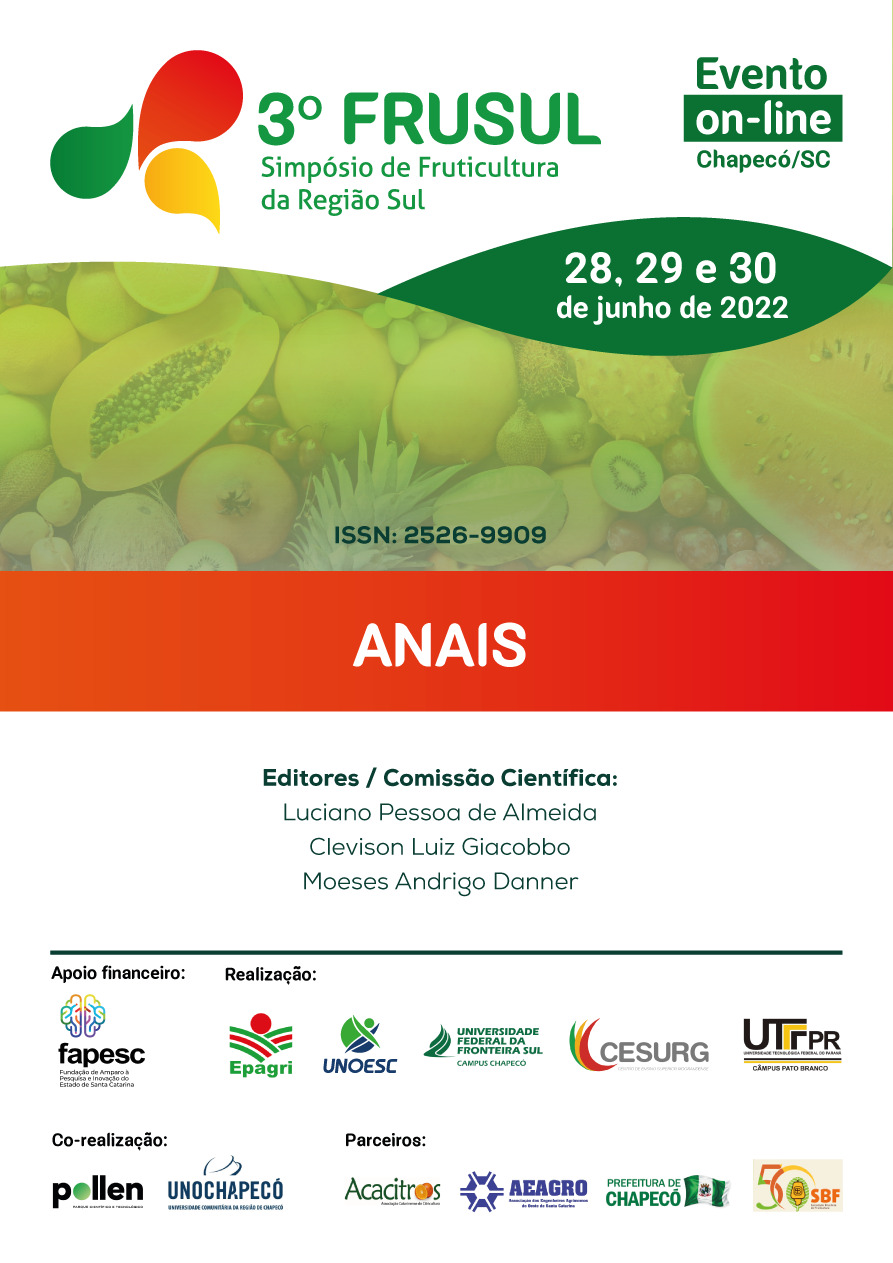Control of Botrytis in grapes with use of different dosages of fungicides
Resumen
Fungal diseases cause significant losses to viticulture, especially in Santa Catarina, where a humid climate prevails, with annual precipitation around 1700 mm year-1 in the producing regions. This favors high humidity and, consequently, infection by causal agents such as Botrytis cinerea, generally controlled with the use of fungicides. However, the repetitive use of the products can make the control inefficient. The objective of this work was to evaluate the effect of different dosages of fungicides in the control of B. cinerea. Berries of Cabernet Sauvignon with disease characteristic symptoms were collected in an experimental area in São Joaquim, Santa Catarina State, Brazil, (28º15'13''S, 49°56'10 "W, 1,400 meters a.s.l.). Discs of disease mycelium were arranged in a BDA medium and the fungicides from the chemical groups Pyrimethanil and Benzimidazol were sprayed at the recommended dose (100%) and 33% more (133%). The control was not sprayed with the fungicides. The plates were grown for seven days in BOD with daily measurements of colony diameter in five repetitions. The variables were diameter day-1, mycelial growth velocity index (MGVI) and antagonism percentage. The diameter was influenced by treatment (fungicide) and time. The 133% dose of Pyrimethanil differed from the other treatments and reduced 79% of the fungus diameter compared to the control after seven days of the experiment, Benzimidazole lost effect after three days, and the 100% dose of Pyrimethanil was efficient until the sixth day compared to the control. The evaluated Pyrimethanil doses presented MGVI lower than the control. Regarding antagonism, significant difference among treatments were found, the 133% dose of Pyrimethanil presented 86% of control. The control of B. cinerea under laboratory conditions was efficient with the use of a 133% dose of Pyrimethanil. However, the use of higher doses than recommended in the field can only occur with the authorization of competent agencies.


